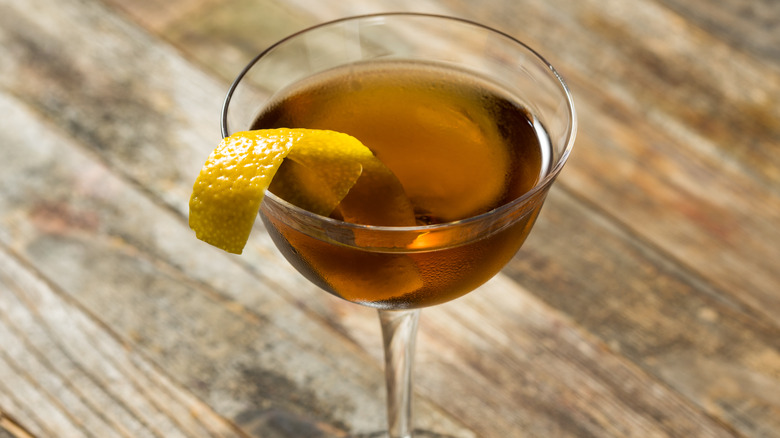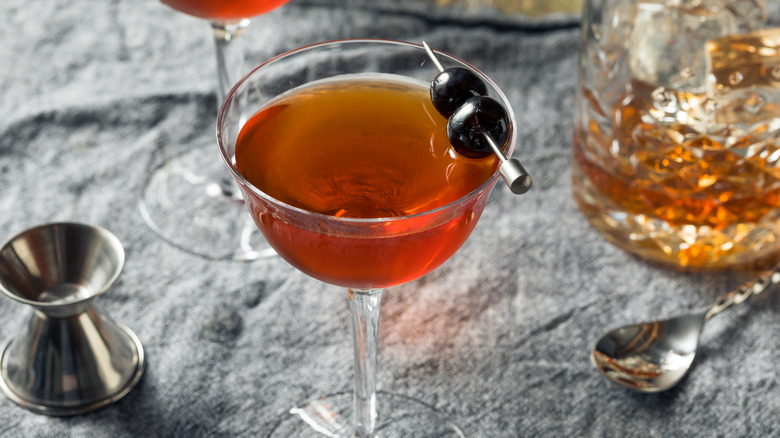The Ingredient That Makes A Bobby Burns Cocktail Different From A Rob Roy
The Rob Roy cocktail has a few theories about its origin; From one thirsty whisky salesman to bartenders serving theater-going guests at New York's Waldorf-Astoria, this classic drink swaps out the bourbon or rye used to make a traditional Manhattan cocktail and replaces the omission with scotch. Bobby Burns continues to evolve the drink recipe with a substitution that has earned the cocktail order a solid reputation as one of the finest whisky cocktails that can be slid across a bar.
Unlike the Rob Roy cocktail, a drink that bartenders use bitters to make, the Bobby Burns delivers a concoction that includes blended scotch, vermouth, and a liqueur that has been made for centuries. Bobby Burns offers drinkers a complex flavor profile after its ingredients are shaken, strained into chilled cocktail glasses, and served garnished with twists of lemon. The seductive drink is amber in color and when well-made, promises all the right notes of citrus, scotch, and sweetness. This gentle touch of sweetness is due in part to one particular liqueur that packs 27 carefully sourced herbs and spices into its bottle and was originally made by an inventive monk in France.
A liqueur with monastic origins
Today, Bénédictine liqueur is made at an actual palace, and its recipe has been carefully guarded for more than five centuries. The palace where the libation is produced was made specifically in honor of the libation, so that the drink could be produced in an environment that would pay suitable homage to the origins of the drink. The alcohol began as a monk's project at the Abbey of Fécamp in Normandy and has remained a libation that is aged with thoughtfully sourced ingredients like saffron and Angelica root. The original recipe, dating back to 1510, is packaged in special bottles labeled with the Benedictine Abbey's coat of arms.
While we know honey is swirled into the blend before the concoction is bottled and distributed, the exact list of herbs and dried botanicals used in the making of Bénédictine is unknown. The copper pot stills first used by the French monks are still used, and the mixture is left in large oak barrels for at least eight months before sweetener is added, the new mixture is heated, and the brew is left to age for another four months before filtration and packaging take place.
The Bobby Burns includes two dashes of this precious Bénédictine nectar, and if you find yourself liking the sweet addition, you can try ordering a London Gypsy: A zesty cocktail made with dry gin, Bénédictine, and Angostura bitters to keep the revelry going. After all, monks would approve.

